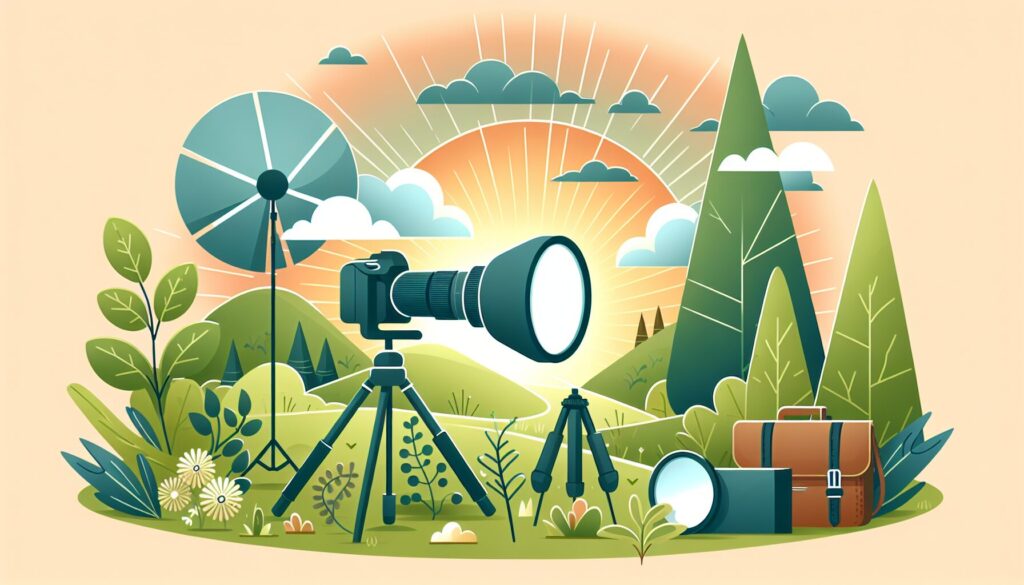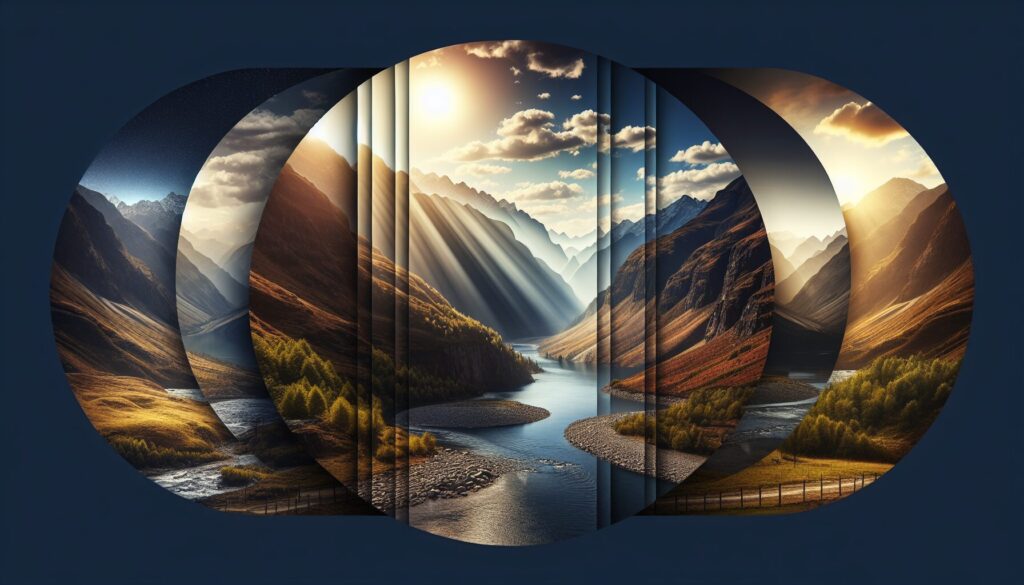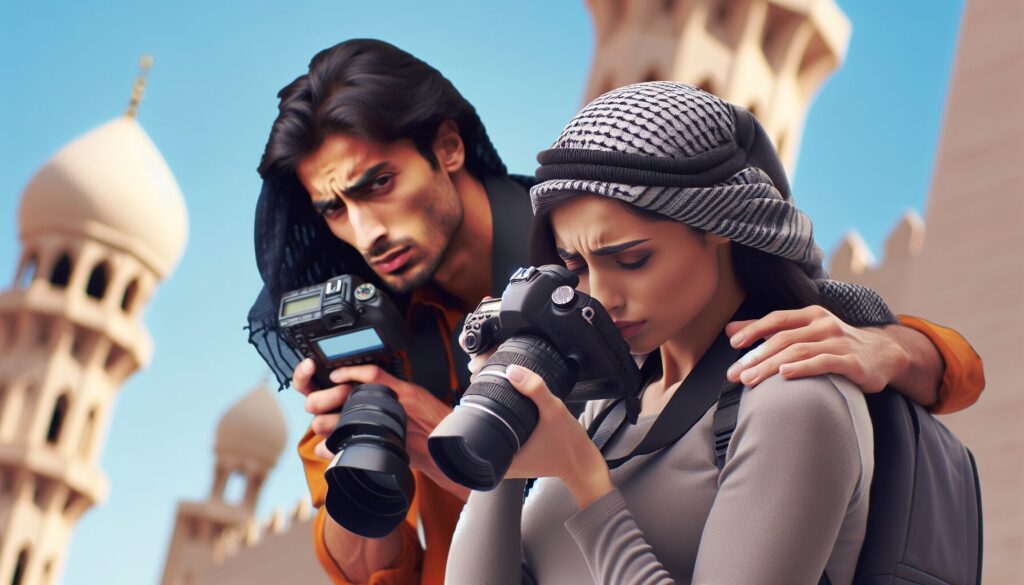Oh, the magic of natural light photography! There’s something so special about capturing images using nothing but the sun’s glow. I remember a serene morning at the Lahore Fort, armed with my trusty Canon EOS R5 and a 50mm f/1.8 lens. The way the light played across the historic walls was breathtaking. I set my camera to ISO 100, f/8, and a shutter speed of 1/250s to capture that perfect balance of light and shadow. In Pakistan, with its stunning landscapes and vibrant cities, natural light is a treasure. However, it’s essential to understand how to harness it effectively. Whether you’re photographing the bustling streets of Karachi or the tranquil mountains of the north, consider the golden hour—those magical moments just after sunrise or before sunset. Additionally, using a reflector can help soften harsh shadows, offering more control over your images. For further guidance, check out resources from National Geographic.
Understanding the Role of Natural Light in Photography
Isn’t it amazing how natural light can transform an ordinary photograph into something truly magical? I remember this one time, wandering through the bustling streets of Lahore with my trusty Canon EOS R5. The sun was just beginning to set, casting a golden hue over everything. With my 50mm f/1.8 lens, I set the aperture wide open to f/1.8, allowing the soft light to envelop my subjects with a dreamy effect. The result was a series of portraits that seemed to glow with warmth and life.
Natural light plays a crucial role in photography, acting as both a challenge and an asset. Unlike artificial lighting, which can be manipulated at will, we’re often at the mercy of the sun’s position and intensity. However, understanding how to harness this light can significantly enhance your photos. For instance, shooting during the ‘golden hour’—the hour after sunrise or before sunset—provides a softer, more diffused light that’s perfect for portraits and landscapes.
Timing and Techniques
Timing is everything in natural light photography. The harsh midday sun can create undesirable shadows and highlights. But don’t worry; there’s a technique to handle this. Using a polarizing filter can help reduce glare and enhance colors, especially under the bright Pakistani sun. I often keep one handy in my camera bag, ready to screw onto my lens when needed.
Additionally, playing with shadows can add depth to your images. When I was exploring the ancient city of Multan, I used the long shadows cast by the afternoon sun to create dramatic effects. By adjusting my camera’s settings to ISO 100 and f/16, I was able to capture sharp details while maintaining the contrast between light and shadow.
Another aspect to consider is direction. Front lighting, where the light source is behind the camera, is great for bringing out colors and details. Meanwhile, backlighting can create stunning silhouettes or halo effects. Once, during a trip to the serene hills of Murree, I positioned my subject with the sun behind them, resulting in a beautiful backlit silhouette that captured the serene ambiance perfectly.
Incorporating these techniques into your natural light photography can significantly elevate your results. Whether you’re capturing the vibrant colors of a bustling bazaar or the serene landscapes of the countryside, understanding how natural light interacts with your camera settings is key. Remember, the light is ever-changing, so keep experimenting and let it guide your creative vision. Don’t miss out on checking resources like `National Geographic` for additional insights and inspiration.
Essential Equipment for Natural Light Photography

Getting into natural light photography can truly be an exhilarating journey. I remember my first adventure with my trusty Canon EOS R5. It was an early morning in the bustling streets of Lahore, chasing the perfect shot. The beauty of natural light lies in its ability to transform even the simplest scenes into breathtaking images. But, of course, having the right equipment makes all the difference in capturing those magical moments.
A good camera is your best friend. The Canon EOS R5, with its 45-megapixel full-frame sensor, is fantastic for capturing details in natural light. It handles ISO ranges beautifully, so you can shoot even in low-light conditions without losing quality. However, if you’re just starting, a Canon EOS 250D or a Nikon D3500 are excellent choices. They both offer great image quality and are more budget-friendly.
Now, let’s talk lenses. For natural light photography, a prime lens like the 50mm f/1.8 is a gem. I often use it for portraits because of its ability to create that dreamy background blur, known as bokeh. Additionally, a wide-angle lens, such as the 24mm f/2.8, can be perfect for landscape shots. It allows you to capture expansive scenes, perfect for those stunning views of the Northern areas of Pakistan.
Accessories to Enhance Your Photography
Beyond cameras and lenses, certain accessories can significantly enhance your photography. A sturdy tripod is essential, especially for long exposure shots during golden hour or at night. I love using my Manfrotto Befree tripod—it’s lightweight and easy to carry around when exploring the vibrant streets of Karachi or the serene valleys of Hunza.
Filters are another must-have. A polarizing filter can reduce glare and enhance colors, especially useful when photographing water bodies or landscapes. The difference it makes can be astounding! Additionally, carrying a reflector can help manipulate natural light, filling shadows on your subject when needed. They’re affordable and can easily fit in your camera bag.
Don’t forget about the power of editing software. Adobe Lightroom is fantastic for making those final tweaks. It allows you to adjust exposure, contrast, and colors, ensuring your photos look their best. If you’re eager to explore more genres and techniques, check out our comprehensive guide on photography genres in Pakistan.
When it comes to the essentials, preparation is key. According to National Geographic, understanding how to manipulate natural light can elevate your photography to professional levels. So, gear up and embrace the beauty of natural light to capture the world around you in all its glory.
Techniques for Capturing the Best Natural Light Photos in Pakistan

Exploring the vibrant landscapes of Pakistan with a camera in hand is an experience like no other. One of my favorite spots is the Hunza Valley, where the light dances off the snow-capped peaks. For those early morning shots, I often use my trusty Canon EOS R5 with a 24-70mm f/2.8 lens. The key is setting the ISO to 100 to minimize noise and a wide aperture like f/2.8 to let in more light, especially at dawn. This combination captures the rich colors of the sunrise perfectly.
However, it’s not just about the gear; understanding the light is crucial. In Karachi, the golden hour is a magical time. The soft light just after sunrise and before sunset offers a warmth that’s perfect for portraits. I remember capturing a local fisherman by the shores with a simple 50mm f/1.8 lens. Setting the aperture to f/4 helped me keep him in focus while softly blurring the background. This technique works wonders in highlighting your subject against the warm hues of the setting sun.
Making the Most of Midday Light
Midday light can be harsh, but there’s a trick to it. When I’m out in Lahore’s bustling streets, I often use a polarizing filter to reduce glare and enhance the sky’s color. It’s amazing how a small accessory can transform an image. One time, I captured the iconic Badshahi Mosque using my Nikon D850, adjusting the shutter speed to 1/250s. This setting helped me manage the bright light and capture the intricate details of the architecture.
Additionally, experimenting with shadows can add depth to your photos. In the deserts of Thar, I’ve used shadows to create dramatic effects. By increasing the contrast in post-processing, the patterns in the sand become more pronounced. When editing, tools like Lightroom can be invaluable for enhancing these natural elements.
Moreover, don’t underestimate the power of overcast days. In Islamabad, cloudy skies diffuse the sunlight, creating a soft, even light. This is ideal for capturing the lush greenery of the Margalla Hills. I usually opt for a higher ISO, around 400, to ensure my images stay sharp without sacrificing quality. Organizations like the Pakistan Photographic Society offer wonderful resources and workshops for those looking to improve their skills.
Finally, always be ready to adapt. Natural light is ever-changing, especially in a country as diverse as Pakistan. Whether you’re in the mountains or by the sea, each location offers unique challenges and opportunities. By embracing these, you’ll be well on your way to capturing stunning natural light photos.
Overcoming Common Challenges in Natural Light Photography

When I first started playing around with natural light photography, I was both excited and a bit overwhelmed. There were so many factors to consider, especially when you’re out in the streets of Lahore or capturing the stunning landscapes of Swat Valley. One challenge I faced was dealing with harsh midday sunlight. I found that using a reflector helped bounce light back onto my subject, which softened shadows. I was using my trusty Canon EOS R5 along with a 50mm f/1.8 lens, and I set my ISO to 100 and aperture to f/16. It made a world of difference in controlling the exposure.
Another hurdle was the ever-changing light throughout the day. Early mornings and late afternoons provide that dreamy golden hour glow. However, you need to be quick because the light changes fast. I remember shooting in Karachi’s bustling markets, and as the sun started setting, I quickly adjusted my camera settings to 1/30s shutter speed to capture the perfect moment. It’s all about anticipating what the light will do next and being ready for it.
Dealing with Low-Light Conditions
Low light can be tricky, especially if you’re trying to capture the vibrant colors of a Pakistani wedding. I usually crank up the ISO on my Canon to around 800 or even higher, depending on the situation. This helps to brighten the image without using a flash, which can sometimes wash out the natural ambiance. A wide aperture, like f/1.8, is also a lifesaver in these situations as it lets in more light.
Sometimes, I use a tripod to stabilize my camera when shooting in low light. This allows for longer exposure times without motion blur. I’ve found this particularly useful when photographing the serene beauty of Hunza Valley at dusk. Additionally, using a polarizing filter can reduce glare and enhance colors, especially when shooting landscapes during the day.
Weather conditions, too, play a vital role in natural light photography. On overcast days, the clouds act like a giant softbox, diffusing light evenly. It’s perfect for portrait photography. I often head to the Margalla Hills in Islamabad on such days to capture the lush greenery. The diffused light brings out the vibrant colors without harsh shadows. For those keen on exploring different styles, check out our extensive guide to various photography techniques in Pakistan.
Finally, don’t forget to experiment and have fun with different techniques. Whether it’s using natural reflectors like white walls or experimenting with silhouettes, keep trying new things. The journey through Pakistan’s diverse landscapes and cultures is a photographer’s dream, offering endless opportunities to capture stunning images.
Inspiration and Case Studies from Pakistani Photographers
Have you ever felt the magic of capturing the perfect moment under natural light? I sure have, and it’s an exhilarating experience! Let’s dive into some amazing stories from Pakistani photographers who have mastered this art. One incredible example is the work of Tapu Javeri. His portraits often use nothing more than the beauty of natural light, and they’re simply mesmerizing. With a Canon EOS R5 and a 50mm f/1.8 lens, he captures depth and emotion by playing with shadows and highlights. His choice of ISO settings, often around 200, ensures clarity without sacrificing the rich textures that natural light offers.
Another inspiring figure is Amean J. He’s known for his breathtaking cityscapes of Karachi, using the early morning and late afternoon light to his advantage. Amean often uses a Nikon D850 with a 24-70mm f/2.8 lens. By setting his aperture to f/16, he achieves a wide depth of field, capturing the intricate details of the bustling city. His secret weapon is a polarizing filter, which helps manage reflections and enhance the vivid colors of the urban landscape.
An Ode to the Golden Hour
The golden hour is a favorite among photographers worldwide, and Pakistan’s diverse landscapes make it even more enchanting. I remember a trip to the scenic Hunza Valley. Armed with my trusty Canon 5D Mark IV and a 35mm f/1.4 lens, I eagerly waited for the sun to dip lower. The play of light created dramatic contrasts, and I set my camera to ISO 100 with a shutter speed of 1/30s for crisp, clear images. The results were magical, capturing the valley’s timeless beauty.
Natural light photography isn’t just about the gear, though. It’s about understanding the nuances of light itself. For instance, Arif Mahmood, a renowned photojournalist, often captures candid moments using just the available light. His approach is to observe and wait for the right moment, often setting his camera to manual mode to have full control over exposure. This technique ensures his subjects are always the star of the photograph, bathed in the warm glow of natural illumination.
In conclusion, Pakistani photographers bring a unique perspective to natural light photography, each with their own techniques and stories. Their work is a testament to the limitless possibilities that natural light provides, capturing the essence of moments in their purest form.
Conclusion
To sum up, the article beautifully captures the art and science of natural light photography, highlighting its transformative power in creating breathtaking images. It emphasizes the importance of timing, particularly during the golden hour, and the role of equipment like cameras, lenses, and accessories in enhancing the quality of photographs. By sharing personal experiences and insights from renowned Pakistani photographers, the article provides practical techniques for handling various lighting conditions, from harsh midday sun to low-light environments. It encourages photographers to experiment with natural light’s ever-changing qualities and embrace the unique opportunities presented by Pakistan’s diverse landscapes. Ultimately, the journey through natural light photography is as rewarding as the stunning images captured, inspiring photographers to continually hone their craft and appreciate the beauty of the world around them.
Happy shooting!
Continue Exploring
Unlock the skies and capture breathtaking vistas with our essential guide to aerial photography in Pakistan. Whether you're a newbie or a seasoned shutterbug, this guide has everything you need to elevate your photography skills to new heights.
Frequently Asked Questions
How can I effectively use natural light for portrait photography?
To effectively use natural light for portrait photography, consider shooting during the golden hours—shortly after sunrise or before sunset—when the light is soft and warm. Position your subject so that the light falls on them at an angle, creating soft shadows that add depth and dimension to the portrait. Using a reflector can also help bounce light onto the subject’s face, reducing harsh shadows and providing a more even illumination.
What are the best camera settings for natural light photography?
For natural light photography, start by setting your camera to Aperture Priority mode so you can control the depth of field. Use a wide aperture (e.g., f/1.8 to f/4) to let in more light and create a shallow depth of field. Adjust your ISO to a lower setting (e.g., ISO 100 or 200) in bright conditions to minimize noise, and increase it in low light situations. Pay attention to your shutter speed to prevent motion blur; a faster shutter speed is needed for moving subjects or handheld shooting.
What are some tips for photographing landscapes using natural light?
When photographing landscapes using natural light, plan your shoots around the golden hours for dramatic shadows and rich colors. Use a tripod for stability, especially in low light conditions, to ensure sharp images. Enhance the sky and clouds by using a polarizing filter, which can also reduce glare from surfaces like water and foliage. Experiment with different angles and compositions, such as framing your subject with natural elements like trees or using leading lines to guide the viewer’s eye through the scene.


Leave a Reply